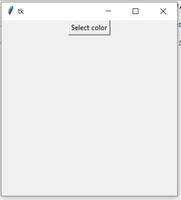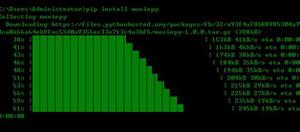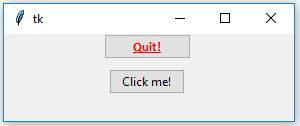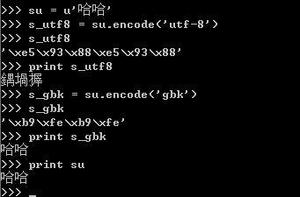python if not

判断是否为None的情况
if not x
if x is None
if not x is None
if x is not None`是最好的写法,清晰,不会出现错误,以后坚持使用这种写法。
使用if not x这种写法的前提是:必须清楚x等于None, False, 空字符串"", 0, 空列表[], 空字典{}, 空元组()时对你的判断没有影响才行
==============转载至http://blog.csdn.net/sasoritattoo/article/details/12451359==========
代码中经常会有变量是否为None的判断,有三种主要的写法:
第一种是`if x is None`;
第二种是 `if not x:`;
第三种是`if not x is None`(这句这样理解更清晰`if not (x is None)`) 。
如果你觉得这样写没啥区别,那么你可就要小心了,这里面有一个坑。先来看一下代码:
[python] view plaincopy
- >>> x = 1
- >>> not x
- False
- >>> x = [1]
- >>> not x
- False
- >>> x = 0
- >>> not x
- True
- >>> x = [0] # You don't want to fall in this one.
- >>> not x
- False
在python中 None, False, 空字符串"", 0, 空列表[], 空字典{}, 空元组()都相当于False ,即:
[python] view plaincopy
- <span>not None == not False == not '' == not 0 == not [] == not {} == not ()</span>
因此在使用列表的时候,如果你想区分x==[]和x==None两种情况的话, 此时`if not x:`将会出现问题:
[python] view plaincopy
- >>> x = []
- >>> y = None
- >>>
- >>> x is None
- False
- >>> y is None
- True
- >>>
- >>>
- >>> not x
- True
- >>> not y
- True
- >>>
- >>>
- >>> not x is None
- >>> True
- >>> not y is None
- False
- >>>
也许你是想判断x是否为None,但是却把`x==[]`的情况也判断进来了,此种情况下将无法区分。
对于习惯于使用if not x这种写法的pythoner,必须清楚x等于None, False, 空字符串"", 0, 空列表[], 空字典{}, 空元组()时对你的判断没有影响才行。
而对于`if x is not None`和`if not x is None`写法,很明显前者更清晰,而后者有可能使读者误解为`if (not x) is None`,因此推荐前者,同时这也是谷歌推荐的风格
结论:
`if x is not None`是最好的写法,清晰,不会出现错误,以后坚持使用这种写法。
使用if not x这种写法的前提是:必须清楚x等于None, False, 空字符串"", 0, 空列表[], 空字典{}, 空元组()时对你的判断没有影响才行。
================================================================
不过这并不适用于变量是函数的情况,以下转载自:https://github.com/wklken/stackoverflow-py-top-qa/blob/master/contents/qa-control-flow.md
foo is None 和 foo == None的区别
问题 链接
如果比较相同的对象实例,is总是返回True 而 == 最终取决于 "eq()"
>>> class foo(object): def __eq__(self, other):
return True
>>> f = foo()
>>> f == None
True
>>> f is None
False
>>> list1 = [1, 2, 3]
>>> list2 = [1, 2, 3]
>>> list1==list2
True
>>> list1 is list2
False
另外
布尔型True和False,not True为False,not False为True,以下是几个常用的not的用法:(1) not与逻辑判断句if连用,代表not后面的表达式为False的时候,执行冒号后面的语句。比如:
a = False
if not a: (这里因为a是False,所以not a就是True)
print "hello"
这里就能够输出结果hello
(2) 判断元素是否在列表或者字典中,if a not in b,a是元素,b是列表或字典,这句话的意思是如果a不在列表b中,那么就执行冒号后面的语句,比如:
a = 5
b = [1, 2, 3]
if a not in b:
print "hello"
这里也能够输出结果hello
以上是 python if not 的全部内容, 来源链接: utcz.com/z/388112.html








